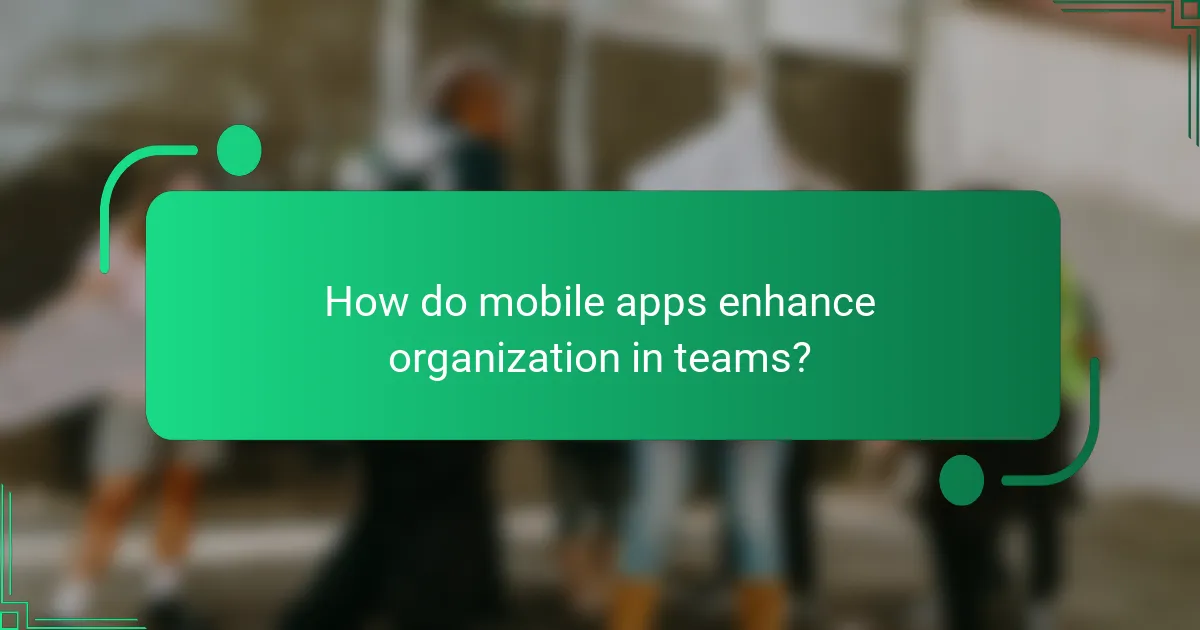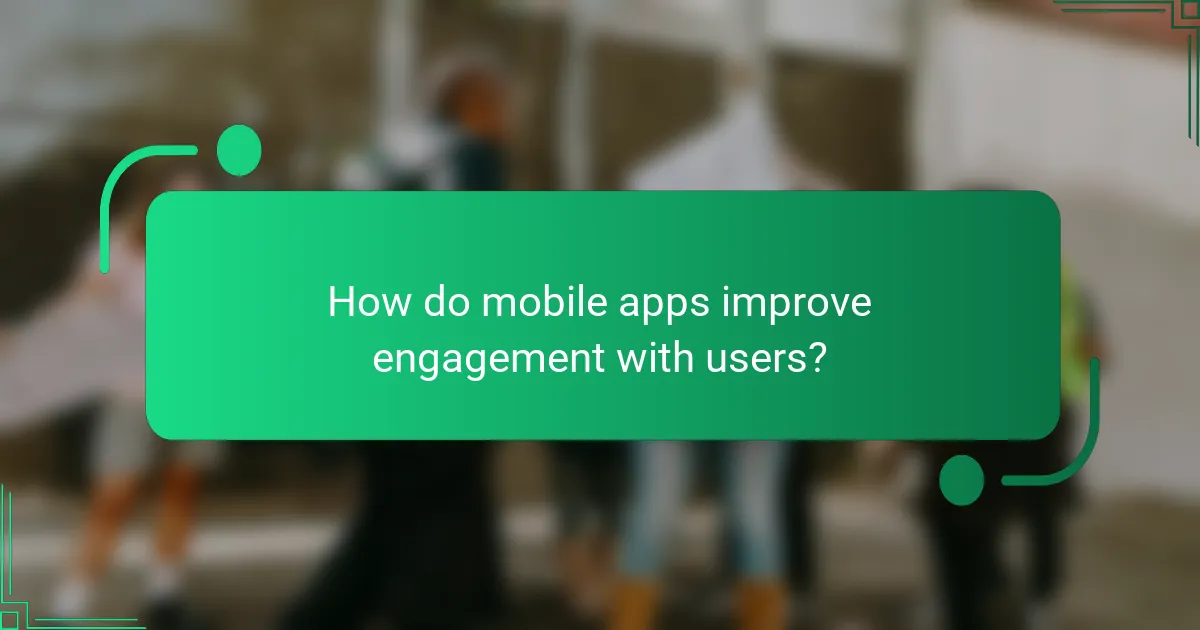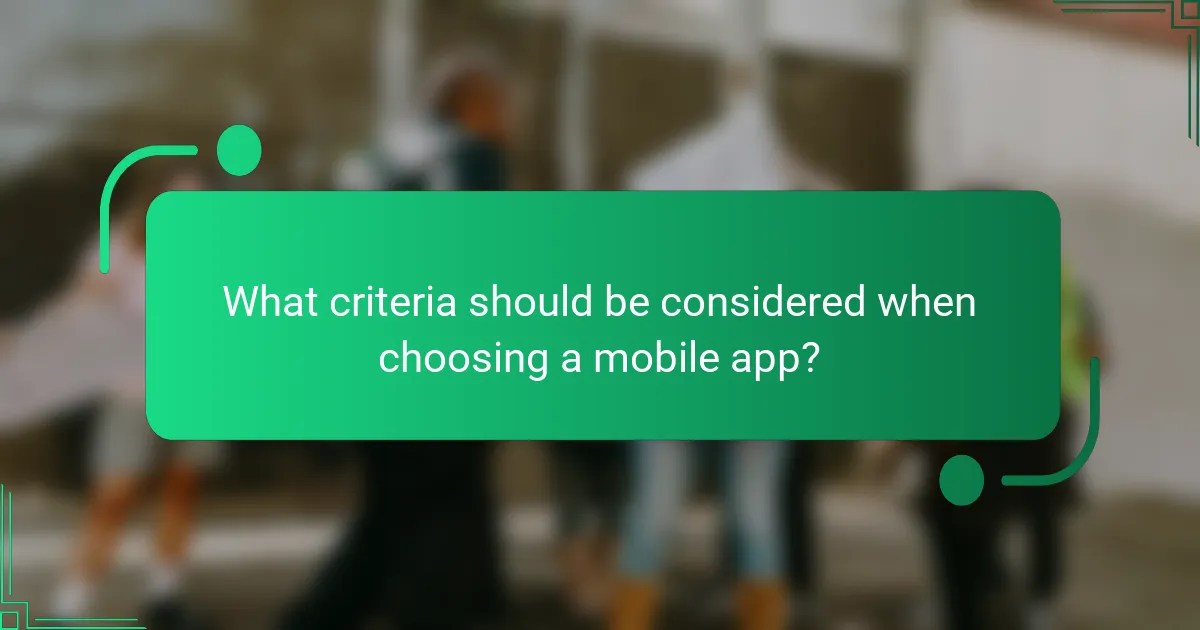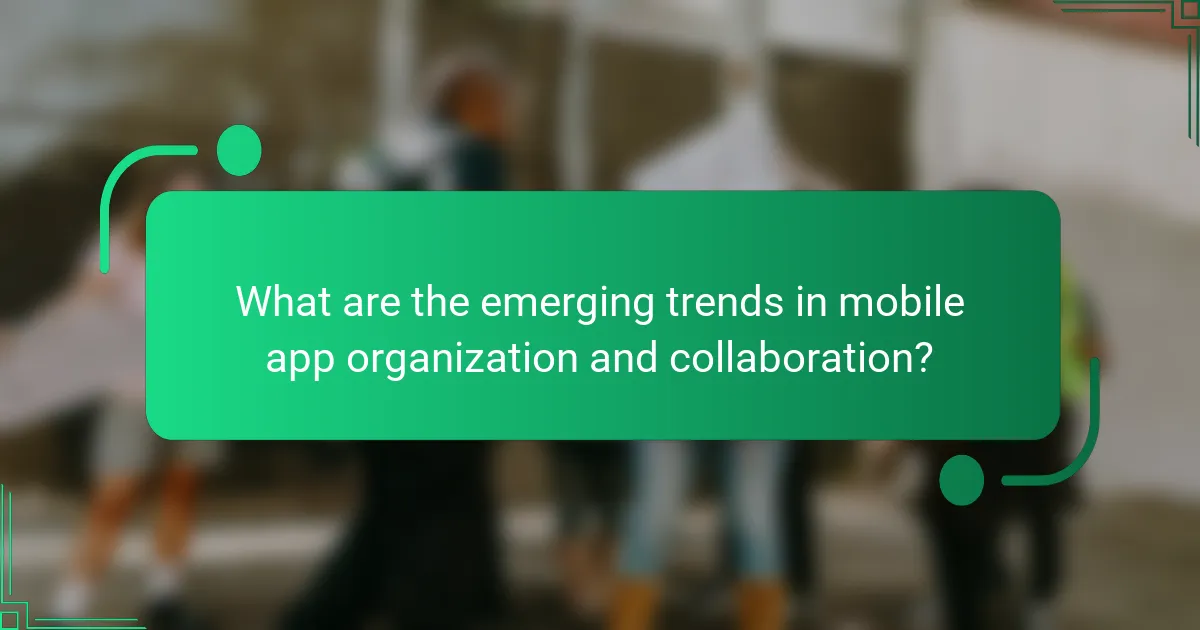Mobile apps play a crucial role in enhancing organization and collaboration within teams by streamlining communication and project management. By utilizing these tools, team members can efficiently allocate tasks and track progress, ensuring alignment and timely completion of projects. Additionally, these apps foster user engagement through personalized experiences and timely interactions, ultimately leading to greater satisfaction and loyalty.

How do mobile apps enhance organization in teams?
Mobile apps significantly enhance organization in teams by streamlining communication, task allocation, and project tracking. These tools enable team members to collaborate efficiently, ensuring everyone stays on the same page and deadlines are met.
Task management features
Task management features in mobile apps allow teams to create, assign, and monitor tasks in real-time. Users can set deadlines, prioritize tasks, and track progress, which helps maintain accountability and transparency within the team.
Popular apps often include visual tools like Kanban boards or Gantt charts, making it easier to see the status of various tasks at a glance. This visual representation can help teams quickly identify bottlenecks and redistribute workloads as needed.
Calendar integration
Calendar integration in mobile apps helps teams coordinate schedules and manage deadlines effectively. By syncing with personal or shared calendars, team members can see upcoming meetings, deadlines, and events in one place, reducing the risk of scheduling conflicts.
Many apps allow users to set reminders and notifications for important dates, ensuring that critical tasks are not overlooked. This feature is particularly useful for teams working across different time zones, as it helps align schedules more efficiently.
File sharing capabilities
File sharing capabilities enable team members to upload, share, and collaborate on documents directly within mobile apps. This functionality eliminates the need for lengthy email threads and ensures that everyone has access to the latest versions of files.
Effective file sharing often includes features like version control and access permissions, allowing teams to manage who can view or edit documents. Utilizing cloud storage solutions within these apps can further enhance collaboration by providing secure and easy access to files from any device.

What are the best mobile apps for collaboration?
The best mobile apps for collaboration enhance teamwork by facilitating communication, project management, and task tracking. Popular choices include Slack, Trello, and Asana, each offering unique features tailored to different aspects of collaboration.
Slack for communication
Slack is a leading app for team communication, allowing users to create channels for specific topics or projects. This organization helps streamline discussions and keeps relevant conversations in one place.
Key features include direct messaging, file sharing, and integration with other tools like Google Drive and Zoom. To maximize its effectiveness, establish guidelines for channel usage and encourage team members to keep conversations focused.
Trello for project management
Trello is a visual project management tool that uses boards, lists, and cards to organize tasks. Users can create boards for different projects and move cards through various stages, providing a clear overview of progress.
Consider using Trello’s labels and due dates to prioritize tasks effectively. It’s beneficial for teams that prefer a visual approach to tracking work, but be cautious of overcomplicating boards with too many lists or cards.
Asana for task tracking
Asana is designed for task tracking and team collaboration, allowing users to create tasks, assign them to team members, and set deadlines. This structure helps ensure accountability and keeps everyone aligned on project goals.
Utilize Asana’s project templates to streamline setup for recurring tasks. Regularly review progress in team meetings to address any roadblocks and adjust priorities as needed, ensuring that the workflow remains efficient and transparent.

How do mobile apps improve engagement with users?
Mobile apps enhance user engagement by providing timely interactions and personalized experiences. They leverage various features to keep users active and invested in the app, leading to increased satisfaction and loyalty.
Push notifications
Push notifications are alerts sent directly to users’ devices, prompting them to take action or informing them of updates. These notifications can significantly boost engagement by reminding users of new content, offers, or events relevant to their interests.
To maximize effectiveness, tailor notifications based on user behavior and preferences. For instance, sending reminders about abandoned shopping carts can encourage purchases, while personalized content alerts can enhance user retention.
Gamification elements
Gamification incorporates game-like features into apps to motivate users and enhance their experience. Elements such as points, badges, leaderboards, and challenges can make interactions more enjoyable and encourage users to engage more frequently.
When implementing gamification, consider the target audience and the desired outcomes. For example, fitness apps often use challenges and rewards to encourage regular exercise, while educational apps might use quizzes and achievements to promote learning.
User feedback mechanisms
User feedback mechanisms allow app developers to gather insights directly from users, enhancing engagement by making them feel heard. Features like surveys, ratings, and comment sections can provide valuable information on user preferences and experiences.
Encourage feedback by making it easy for users to share their thoughts and by responding to their input. Regularly updating the app based on user suggestions can foster a sense of community and loyalty, ultimately leading to higher engagement levels.

What criteria should be considered when choosing a mobile app?
When selecting a mobile app, consider factors such as user interface, integration capabilities, and cost structures. These criteria will help ensure the app meets your organizational needs and enhances collaboration and engagement.
User interface and experience
The user interface (UI) and overall user experience (UX) are critical for ensuring that team members can easily navigate the app. A clean, intuitive design minimizes the learning curve and encourages regular use. Look for apps that prioritize usability and provide customization options to fit your team’s workflow.
Evaluate the app through user testing or demos to gather feedback on its interface. Consider features like responsive design, accessibility options, and the ability to personalize dashboards, which can significantly enhance user satisfaction and productivity.
Integration with existing tools
Choosing a mobile app that integrates well with your current tools is essential for seamless collaboration. Check if the app supports popular platforms like Google Workspace, Microsoft 365, or project management tools such as Trello and Asana. Effective integration can streamline processes and reduce the need for switching between applications.
Assess the app’s API capabilities and whether it allows for custom integrations. This flexibility can be a significant advantage, enabling your team to tailor the app to specific workflows and enhance overall efficiency.
Cost and pricing models
Understanding the cost and pricing models of mobile apps is vital for budget management. Many apps offer tiered pricing based on features or user counts, so evaluate which plan aligns best with your organization’s needs. Look for options that provide a balance between functionality and affordability.
Be aware of additional costs that may arise, such as in-app purchases or subscription fees. Consider free trials to test the app’s effectiveness before committing financially, ensuring that it delivers value for your investment.

What are the emerging trends in mobile app organization and collaboration?
Emerging trends in mobile app organization and collaboration focus on enhancing productivity and streamlining workflows. Key developments include the integration of AI-driven tools and solutions tailored for remote work, which help teams communicate effectively and manage tasks efficiently.
AI-driven productivity tools
AI-driven productivity tools are transforming how teams organize their work and collaborate. These applications utilize machine learning algorithms to automate repetitive tasks, analyze data, and provide insights that help users prioritize their activities. For example, tools like Trello and Asana now incorporate AI features that suggest task assignments based on team members’ past performance and availability.
When selecting AI-driven tools, consider their integration capabilities with existing software. Look for applications that can seamlessly connect with your email, calendar, and other collaboration platforms to enhance overall efficiency. Additionally, be mindful of data privacy and compliance with regulations like GDPR when using AI tools that handle sensitive information.
Remote work optimization
Remote work optimization focuses on enhancing collaboration among distributed teams through mobile applications. Solutions such as Slack and Microsoft Teams provide real-time communication and file sharing, making it easier for team members to stay connected regardless of location. These platforms often include features like video conferencing and project management tools to facilitate seamless collaboration.
To optimize remote work, establish clear communication protocols and use mobile apps that support asynchronous collaboration. Encourage team members to utilize status updates and shared calendars to keep everyone informed. Avoid common pitfalls such as over-reliance on email, which can lead to miscommunication and delays. Instead, leverage dedicated collaboration tools to maintain clarity and engagement among team members.
